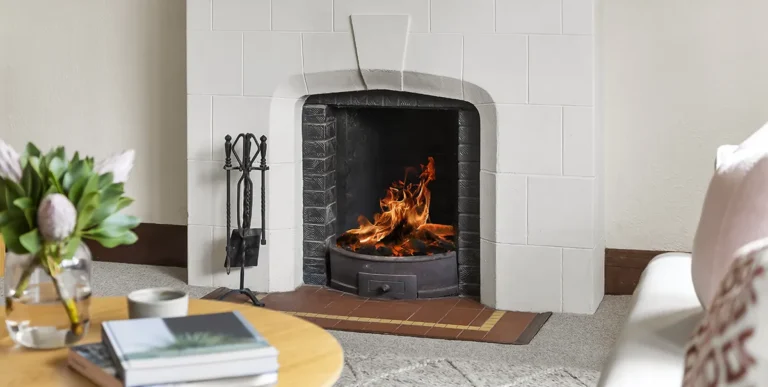A Clean Chimney Doesn't Catch Fire: Prevent Chimney Fires with Regular Cleaning
Imagine you are cozy by your fireplace, relaxing and basking in its warmth and glow. The last thing you’re thinking about is a devastating chimney fire. But this scene can go from tranquil to terrifying in a matter of moments if you haven’t kept up on chimney cleaning and sweeping each year.
One of the early signs of a chimney fire is the presence of creosote buildup—a highly flammable residue that can ignite without warning. This residue accumulates on the inside of a dirty chimney, causing fires that often destroy homes and endanger lives.
Chimney fires can burn explosively. They can be so noisy and dramatic, neighbors and people passing by can hear the roar. Flames or dense smoke may shoot out of the chimney. Homeowners report hearing a frightening sound like a freight train or jet airplane. Chimney fire causes often include creosote buildup, poor ventilation, or burning unseasoned wood. However, these are the signs of the chimney fires you know happened. Other types of “silent” chimney fires could go undetected—but they’re just as dangerous to your health and your home. That’s why an annual chimney inspection and cleaning from a friendly Aero Services technician is the best way to avoid fires and damage.
Have You Had a Chimney Fire You Don’t Know About? Signs of Hidden Chimney Fires
Slow-burning chimney fires are not as dramatic or visible, and these “stealth” fires can go undetected until Aero Services performs a certified chimney inspection and cleaning. Yet the temperatures these “silent” chimney fires can reach are so high, they can cause as much damage to the chimney structure and nearby combustible parts of your home as their obvious and visible counterparts. An annual inspection and cleaning with Aero Services can assess any damage and provide any quotes needed on repairs.
Chimney Fires Can Be Prevented with Annual Chimney Cleaning
Fireplaces and wood stoves are meant to safely burn wood fires, and provide heat for a home. The chimney is designed to vent out the smoke, water vapor, poisonous gases, unburned wood particles, hydrocarbon, tar fog and assorted minerals. As these substances travel up through your chimney to the outdoors, cooling and condensation occurs. Consequently, highly flammable creosote residue builds up on the inner walls of the chimney. This happens in all chimneys.
Creosote can be crusty, flaky, drippy, sticky, shiny, or hardened. All forms of creosote are highly combustible. If creosote builds up in sufficient quantities, every time you burn wood in your stove or fireplace, you’re playing roulette. Yet there is a very reliable way to stay safe, and prevent a chimney fire: annual chimney inspection and cleaning with an Aero Services technician.
How a Chimney Fire Damages Your Home and Chimney Structure
When a chimney fire occurs in a masonry chimney, the temperature can be 2000º Fahrenheit, melting mortar, cracking tiles, causing liners to collapse, and damaging the outer masonry. “Thermal shock” can occur, cracking tiles and displacing mortar, which opens up a pathway of opportunity for the burning flames to reach the wood frame of the house. In older homes especially, this can be a devastating and dangerous event.
Wood Stoves Burn Hotter and Require Regular Chimney Cleaning
Wood stoves are designed to safely burn especially hot fires within the chamber. The venting pipes connecting the stove to the chimney, however, are not meant to withstand the extreme higher temperatures of a chimney fire. If this happens, these metal venting pipes can warp, buckle, or even disconnect during the intense vibrations created by air turbulence during a chimney fire. These ruptures can cause the fire to spread, and devastating damage can occur. For this reason, it is advised to clean the chimney annually if you are using your wood stove as a source of heat for your home.
Have You Had a Chimney Fire? 5 Telltale Signs of Chimney Fires
Chimney fires can happen without you knowing it. Here are five signs Aero Services technicians look for to assess if this type of fire has occurred:
- “Puffy” or “honeycombed” creosote
- Warped damper, metal smoke chamber connector pipe, or metal chimney
- Cracked or collapsed flue tiles, or tiles with large chunks missing
- Roofing material damaged from hot creosote
- Cracks in exterior masonry
If you think a chimney fire has occurred, call Aero Services. Depending on the situation, you might need a few flue tiles replaced, a new liner system installed, or an entire chimney relined or rebuilt. Each situation is unique, and you’ll receive a quote from Aero Services that outlines best practices for safety and restoration.
Inspect and Clean Your Chimneys Every Year to Prevent Chimney Fires
As you consider this information, just know one thing: clean chimneys don’t catch fire. Aero services can inspect and clean your chimneys annually and quote on any repairs if needed. The Aero Services technician may have other maintenance recommendations, depending on how you use your fireplace or stove. The most important thing, however, is to treat your chimney well, and keep it clean and well maintained.




